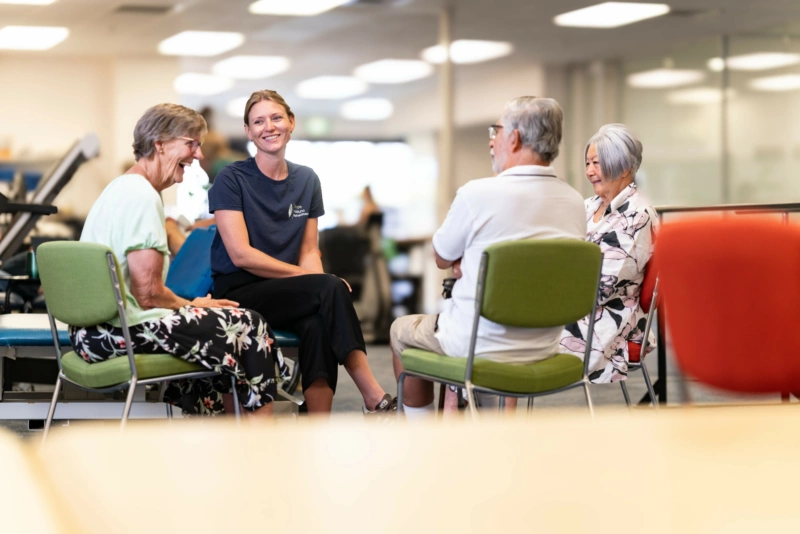Learning to do less, to do more
For many polio survivors, fatigue and limited energy aren’t just occasional frustrations, they’re daily realities. Pacing is the practice of planning, prioritising, and resting in a way that helps you get the most out of your energy, while reducing discomfort, stress, and the risk of overdoing it.
What is pacing?
Pacing is a practical strategy to help you manage your physical and mental energy across the day or week. It’s not about giving up activities you enjoy, it’s about structuring them in a way that helps you avoid the “boom and bust” cycle of doing too much, crashing, and needing extended recovery time.
Pacing strategies may include:
- Planning activities in advance
- Taking regular rest breaks
- Matching energy levels to tasks
- Prioritising what matters most
- Adapting activites and using assistive aids
Some people find it helpful to use concepts like “spoons,” “energy envelopes,” or “energy dollars” to visualise what they can realistically do in a day. However you think about it, the goal is to protect your wellbeing by respecting your body’s limits and avoiding burnout.
Recognising when pacing is needed
Signs you may be pushing beyond your current capacity include:
- Feeling more exhausted than expected after simple tasks
- A noticeable drop in movement quality (jerkiness, tremors, or increased pain)
- Unusual or compensatory movements like swinging a leg out or hunching a shoulder
- Increased accidents or errors, forgetfulness, or irritability
- Repeating a pattern of doing too much, then needing long recovery time
- Still feeling tired the following day
Fatigue isn’t just physical. Stress, strong emotions, or mentally demanding activities can drain your energy too.
Adjusting to a different way of living
Many people with the late effects of polio have a long history of adapting and persevering through physical challenges, sometimes by minimising or pushing past their limitations. Learning to pace, to rest before you crash can feel unfamiliar at first, but as symptoms change over time, learning to pace activities and incorporate regular rest rather than pushing to the point of exhaustion, can be a significant shift
You may struggle with:
- Finding it difficult to say no or request assistance
- Experiencing discomfort with rest due to beliefs about productivity
- Concern that others may not understand or recognise your needs
- Managing financial or practical barriers to accessing support
Pacing is a learned strategy that can improve energy management, support daily functioning, and reduce the risk of overuse-related complications. Over time, it can contribute to greater stability, independence, and overall wellbeing.

Practical pacing tips
- Break up tasks into smaller chunks with short, regular rest breaks. Frequent rests can be more effective than one long break.
- Schedule activities during times of day when your energy is usually higher.
- Allow space between appointments or outings to recover before the next demand.
- Make rest restorative — this could include quiet time, listening to music, breathing exercises, or simply putting your feet up.
- Use the 3 D’s: Do it, Delegate it, or Dump it, don’t let low-priority tasks drain your energy.
- Set realistic expectations — and accept that not everything will get done. That’s okay.
Social and emotional impact
Adopting pacing strategies can have an impact on social participation and relationships. It may involve adjusting how and when you attend events, requesting assistance with certain activities, or setting clearer boundaries around your energy levels. These changes can sometimes be misunderstood by others, which may lead to feelings of isolation or frustration.
Helpful strategies include:
- Communicating your needs in a clear and respectful way — e.g., “I need to rest now” or “I’m unable to attend, but I appreciate the invitation.”
- Connecting with others who also use pacing strategies, which can offer shared understanding and support.
- Noticing patterns where your limits are consistently challenged and considering strategies to protect your wellbeing in those situations.
Social adjustments are a common part of managing long-term conditions, and seeking supportive environments can help foster confidence and emotional wellbeing.
Remember - rest is not doing nothing
Rest is an active, essential part of managing the late effects of polio. It’s what allows your body and brain to recharge so you can keep doing the things that matter most to you. Rest is strength. And pacing is how you protect it.
Disclaimer
This resource is provided for general information only. It is not a substitute for professional medical advice, diagnosis, or treatment. Always seek the guidance of your GP, physiotherapist, or another qualified health professional before making changes. cann Charitable Trust accepts no responsibility for any outcomes resulting from use of this material.








